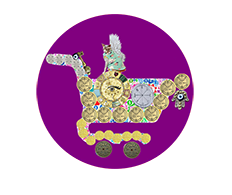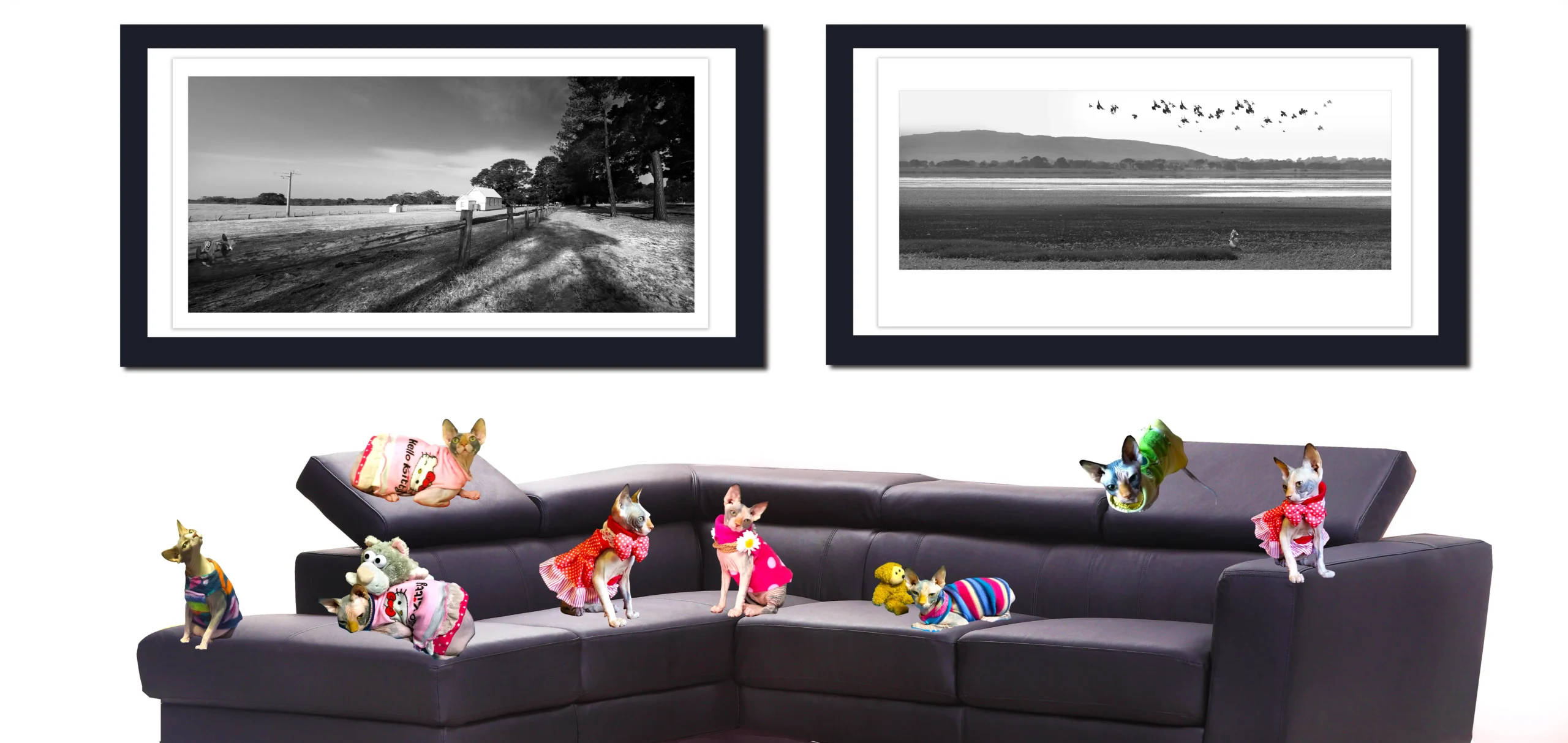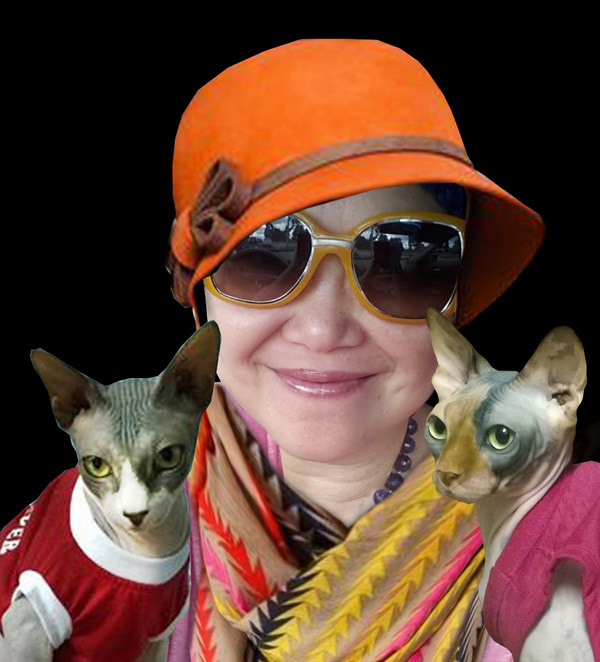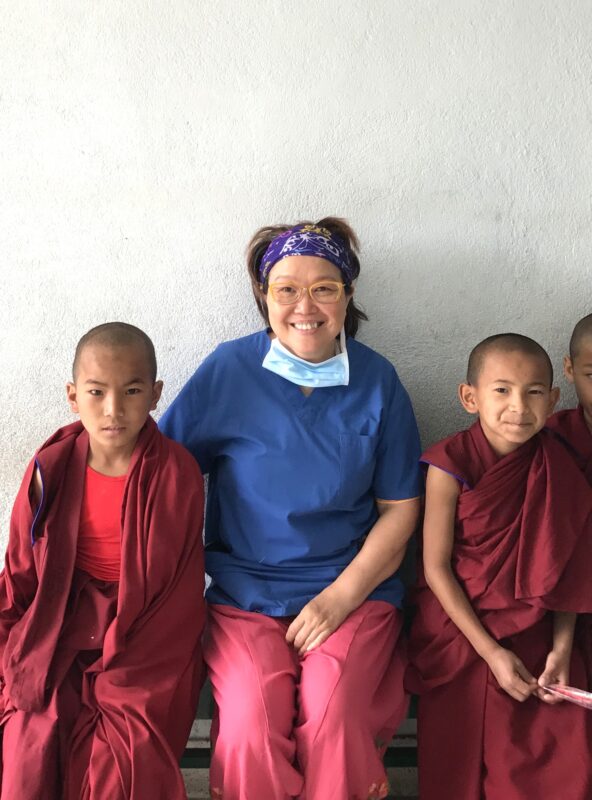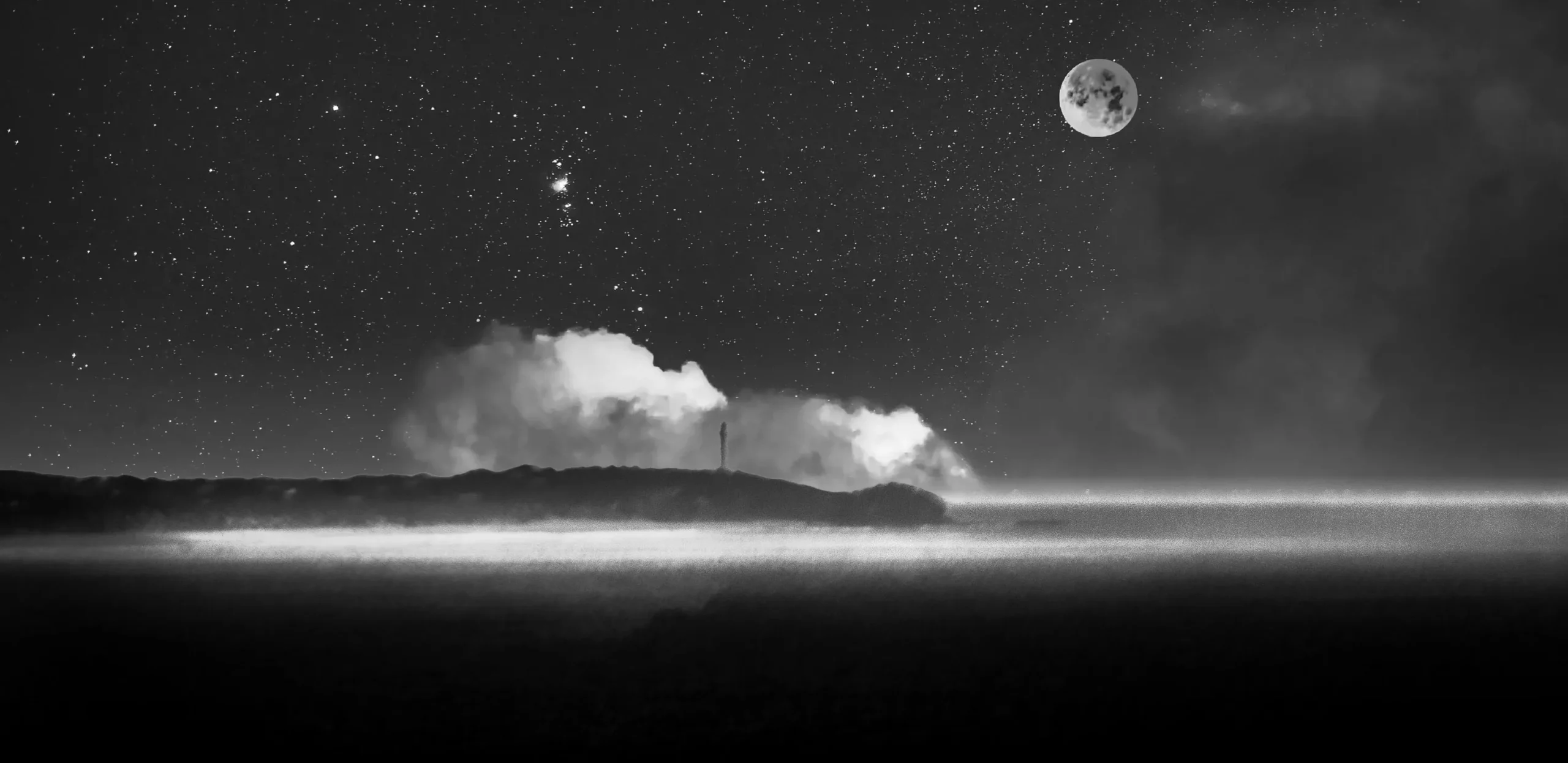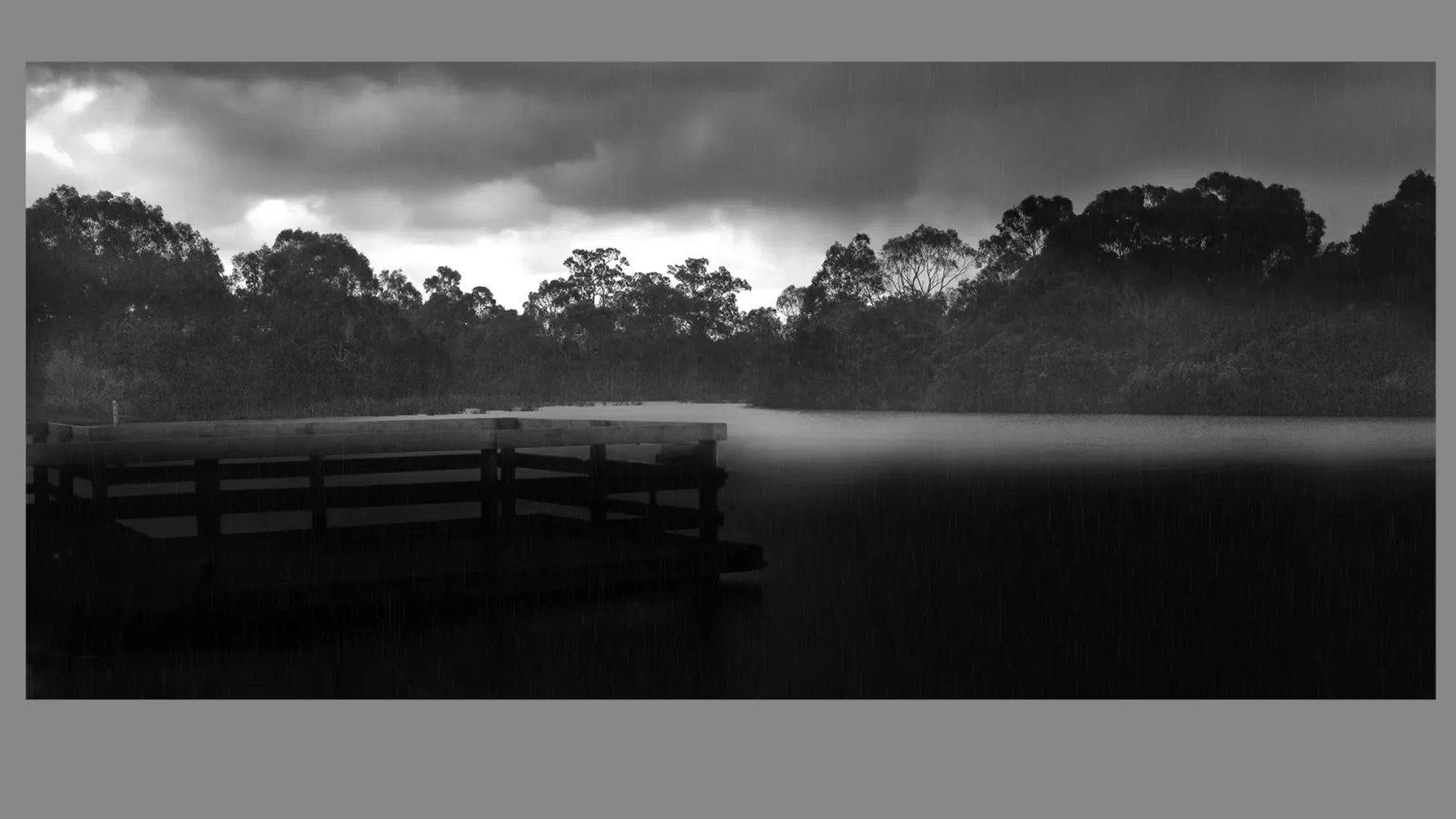Among wild Horses | Adventure of Photographing Wild Horses
Welcome to Travel, Lifestyle, Art & Photography of Dr Zenaidy Castro Blog. The globetrotting Cosmetic Dentist based in Melbourne Australia. See the world from my photographic perspective. I identify myself as a passionate explorer and adventurer at heart, with strong interest in remote places, unique cultures and different lifestyle.
I hope you enjoy exploring my travel blog and inspired by what you see. Through my photos, I hope to encourage others to get out and explore. To not be scared and to be open to new experiences and civilisations. Because, at the end of the day, travel is about finding experiences that change our minds and widen our perspectives in order to create a more inclusive world. Please feel free to browse thru my blog.
Most of the photographs posted on this blog were taken with my mobile phone. I invite you to browse through my SHOP page to see the real fine art photography that I have created while travelling.
______________________________________________________________________________________________
An unforgettable experience of photographing wild horses in their natural habitat.
During my unforgettable journey through Montana, USA, in June of 2016, I had the rare privilege of being guided by Michael Francis, an exceptional private tour guide whose passion for nature was as deep as his knowledge of the American wilderness. More than just a photography mentor, Michael became a source of inspiration, opening my eyes to the intricate beauty of the landscapes, the rhythms of wildlife, and the quiet wisdom of the natural world.
Each day was an adventure, a blend of early morning golden hours and long, dusty trails where I honed not only my technical skills behind the lens but also learned how to see more deeply—to notice the subtle interplay of light and shadow on a horse’s coat, the strength in their gaze, and the poetry in their movements. Under Michael’s guidance, I began to understand photography not just as a way of capturing images, but as a means of telling stories—of evoking emotion, preserving fleeting moments, and honoring the spirit of the subjects before me.
Among all the majestic creatures we encountered, it was the horses that captured my heart most deeply. Roaming freely across the wide-open plains, silhouetted against Montana’s iconic big sky, they seemed to embody everything I love about the wild: freedom, strength, grace, and resilience. With every snap of the shutter, my passion for horse photography deepened. These animals were more than beautiful subjects—they were symbols of untamed spirit and timeless connection between humanity and nature.
That trip wasn’t just a travel experience; it was a soulful awakening. The stories Michael shared—of horses he had followed for years, of wildlife patterns passed down through generations, of conservation efforts in the American West—left a lasting imprint on my heart. It was in those quiet moments, with my camera in hand and the sound of hoofbeats echoing across the grasslands, that I rediscovered why I fell in love with both horses and photography in the first place.
Montana gifted me not only breathtaking images but also a renewed sense of purpose in my art. I returned home with more than memory cards full of photographs—I returned with stories, insights, and a deeper reverence for the sacred bond between nature and the creative soul.


The Art of Patience: A Close Encounter with a Wild Horse in Montana
In the sprawling, untamed landscapes of Montana, where the rolling plains stretch endlessly into the horizon and the rugged mountains scrape the sky, I embarked on a wilderness journey that would forever deepen my understanding of wildlife and the art of photography. The encounter I experienced would not only transform my appreciation of this craft but would leave an indelible mark on my soul—a moment where patience, respect, and connection merged into pure magic.
It was June of 2016 when I had the privilege of delving into this iconic terrain under the guidance of Michael Francis, a seasoned wildlife expert and tour guide whose knowledge of Montana’s natural wonders felt encyclopedic. Michael’s passion for this land was infectious, and as we prepared to explore its hidden valleys and serene backcountry, I could feel the weight of the journey ahead—a promise of discovery that seemed to hum in the air.
This account is a testament to the enduring value of patience in wildlife photography and a reflection on the beauty and lessons found in one of life’s rarest encounters—a silent connection with a wild horse in its natural environment.
Setting the Scene: Montana’s Wilderness
Montana, often referred to as “Big Sky Country,” is a vast and diverse wilderness, its scale and grandeur difficult to fully express with words. The land itself feels alive as the rugged peaks of the Rockies stand watch over sweeping valleys, golden prairies shimmer with elusive sunlight, and untouched forests stretch toward infinity. Wildlife thrives here in abundance: elk graze on the plains, grizzly bears roam through thick woods, and mountain lions prowl in secretive shadows lurking between rocky outcrops.
But Montana’s wild horses are an ethereal presence in the landscape—a symbol of freedom, resilience, and raw beauty that embodies the spirit of the untamed West. These horses, descendants of those released or escaped generations ago, have formed bands across the state’s wide-open spaces. Sightings, however, are rare and treasured by those lucky enough to witness them. When Michael mentioned the possibility of encountering wild horses during our expedition, I felt my pulse quicken with anticipation.
The Role of Patience: A Guiding Principle in Wildlife Photography
One of the first things Michael emphasized was the virtue of patience. For a wildlife photographer, patience is not merely a virtue—it’s a vital tool. Unlike controlled environments such as studio photography, nature operates on its own unpredictable terms. The animals we sought to capture existed free from the constraints of human schedules, unaware or indifferent to the presence of the camera trained on them.
The perfect shot—a breathtaking moment frozen in time—rarely presents itself immediately. Hours can be spent waiting for the right light, the right movement, or the right angle, all while resisting the chaos of impatience. Wildlife photography requires patience as a foundation and an unwavering respect for the rhythm of nature itself.
Michael was keen to impart this wisdom, citing wisdom learned from his decades of fieldwork. “Wild horses especially,” he explained, “are wary of people. Earning their trust can take time, and getting close enough for meaningful photos? You’ll have to wait, watch, and let them decide when they’re comfortable.”
The Journey to the Valley
We ventured farther into the wilderness, driving through narrow dirt trails flanked by towering ponderosa pines. The terrain shifted as the elevation increased. Eventually, the forest gave way to a sun-soaked valley, its vast expanse framed by rolling hills and distant peaks. Michael explained that this was a frequented grazing area for the wild horses. “It’s secluded and quiet,” he said. “The horses love it here.”
The scene was breathtaking. The golden hues of the grasslands shimmered in the late afternoon sun, and the wind brought the faint scent of wild sagebrush. The valley hummed with quiet vitality: a hawk soaring overhead, crickets chirping softly, and somewhere far off, the gentle burble of a stream. I could feel the anticipation in the air. Could this be the moment we’d been waiting for?
It didn’t take long before Michael spotted something—a lone wild horse grazing peacefully in the distance. Even from afar, its presence stirred something within me. The horse was a vision of strength and independence, its sinewy muscles shifting beneath a sun-dappled coat as it grazed. Silent and awe-struck, we paused to savor the moment.
The Encounter Begins
Michael and I began our approach cautiously, careful not to disrupt the horse’s tranquility. Wild horses are skittish and unpredictable, and the slightest disturbance could send them retreating into the distance. Michael suggested we separate and maintain wide vantage points, creating space for observation without closing in too tightly.
I took position on the opposite side of the valley. Slowly, deliberately, I crouched low beneath the rustling grass, moving with intentionality to avoid sudden movements that might alarm the animal. Michael watched from afar, his expert gestures ensuring that I understood the importance of maintaining respect for the space the horse occupied.
The journey to establish trust had begun.
Building Trust: The Art of Observation
Wild horses are naturally wary of humans. These animals have lived for generations in this secluded wilderness, untethered to human influence, and their survival instincts have been honed by experience. Earning their trust as a photographer is no small feat. It requires not only patience but the ability to read and respect their behavior.
As I crouched low, camera in hand, the seconds began to stretch into minutes. Minutes accumulated into an hour, and all the while, I remained motionless, allowing the horse to acclimate to my presence. It grazed, occasionally lifting its head to survey the landscape, flicking its tail lazily. I was careful not to make any sudden movements; the horse’s trust would have to be earned slowly, with sensitivity and great care.
This technique is the cornerstone of wildlife photography: patience intertwined with respect, offering the animal space to feel secure and unthreatened. As wildlife photographer Boyd Norton once said, “The intimate moments with wild animals happen when you give them the freedom to share their world with you.”
A Surprising Turn of Events
Just as I adjusted my camera for the ideal lighting conditions, I noticed a sudden shift in the horse’s behavior. Its body language changed—it stopped grazing and turned its head in my direction. For a fleeting moment, I worried that I’d moved too quickly or perhaps overstepped the invisible boundary of trust.
But then, something remarkable happened. Instead of retreating, the horse began to step toward me, cautiously at first, its movements deliberate. My breathing slowed as I realized what was unfolding. The wild horse—this creature symbolic of independence and untameable spirit—was choosing to close the distance.
It approached slowly, until it was merely an arm’s length away. Its powerful frame dominated the foreground, yet its demeanor was calm and inquisitive. Its dark, expressive eyes met mine, filled with flickers of curiosity and depth that no photograph could fully capture. Time seemed to freeze in that instant—a profound moment of recognition between two beings from completely different worlds.
Capturing the Moment
My heart raced, but I steadied my body and breath, resisting the urge to move. Raising my camera carefully, I began to shoot, capturing a series of photographs that felt as intimate as they were extraordinary. The horse’s face was framed perfectly in the golden sunlight, its features highlighted with a soft glow that radiated authenticity. I took close-ups of its eyes, wide shots of its muscular form against the sweeping valley, and delicate images of it grazing peacefully once more.
The photographs I captured that day would come to represent something greater than personal achievement. They were a testament to the rewards of patience, preparation, and reverence for nature.
Reflecting on the Moment
As the horse eventually turned away and retreated to the hills, I sat quietly with my camera in hand, reflecting on what had just transpired. This encounter had been as much a lesson in humility as it was in photography. The connection I felt with the horse underscored the importance of harmony—of meeting nature on its own terms, instead of forcing it into conformity.
Wildlife photography demands far more than technical skill. It asks the photographer to become an active listener, a student of the natural world, attuned to its subtle rhythms and behaviors. What you bring back from the field is not just a photograph but often a deeper understanding of the animal, the ecosystem, and your own place within it.
The Rewards of Patience and Respect
My experience in Montana was far more than just a fleeting encounter with a wild horse—it was a reminder of the profound and transformative power of patience and respect when working alongside the natural world. Wildlife photography, often perceived as an artist’s quest to capture fleeting moments of beauty, inherently demands a deeper form of engagement. It is not merely about pointing your camera toward a subject; it is an act of immersion, observation, and connection—a delicate dance with nature’s rhythms that challenges you to slow down, listen, and honor the space you share with your subject.
This particular encounter with the wild horse in Montana exposed me to the truth that nature operates on its timeline and terms. As humans, we are often quick to demand instant gratification, expecting that we can somehow control or dictate the environment around us. Wildlife, however, reminds us of the necessity of patience—not just in waiting out hours or days for the “perfect shot” but in adopting a mindset of humility and understanding toward the living, breathing world around us. In every step of the process, from seeking out the subject to capturing its essence, patience allows us to truly align with nature’s cadence rather than attempting to impose our will upon it.
For photographers who aspire to capture the raw beauty of untamed landscapes and their inhabitants, the practice of patience is both a skill and a philosophy. It teaches us how to coexist with our subjects—not as observers who treat their environment as a passive stage, but as collaborators who engage deeply with the space we share. Respect goes hand-in-hand with patience because it calls on us to recognize and honor the needs, behaviors, and boundaries of the creatures we photograph. The two virtues together are not only practical tools but also spiritual ones, elevating your experience of wildlife photography from something transactional to something deeply relational.
The Nature of Patience in Wildlife Photography
Patience in wildlife photography is multi-faceted. It requires an investment of time, a quieting of the mind, and the discipline to relinquish control over the outcome. Unlike a controlled studio environment where lighting, equipment, and subjects are manipulated to achieve perfection, nature comes with no guarantees. You cannot command a wild horse to stand where you’d prefer or wait for the perfect golden-hour light—your job instead is to remain present and adaptable, ready to embrace what nature offers you in its own time.
Take, for example, the hours I spent in Montana observing the wild horse while it grazed in the valley. Each minute of utter stillness—where I refrained from interrupting its behavior or encroaching on its space—enabled not only trust to build between the two of us but also allowed me to absorb the nuances of its movements, from the twitch of its tail to the subtle shifting of its body against the breeze. Every small detail became a lesson in animal behavior and an opportunity for connection rather than mere observation.
Patience also manifests in smaller ways in the field. It means being prepared for a shot while resisting the urge to rush it. It means taking breaks between capturing images to simply watch your subject without feeling compelled to photograph everything. It’s about resisting perfectionism—accepting that not every photo will be flawless and that, often, the imperfections are what bring life to your work.
While patience might feel inactive to those unfamiliar with wildlife photography, it’s anything but. Your quiet moments spent watching, waiting, and allowing the subject to relax into its natural state are all part of the active, intentional process. Every second teaches you something new while simultaneously deepening your appreciation for nature.
The Role of Respect in Wildlife Photography
Respect elevates wildlife photography from a craft to an art form—and perhaps even a way of life. Respect requires photographers to understand their subjects holistically, recognize the sanctity of their environment, and capture their essence without exploiting or disturbing their natural behaviors. This means respecting the boundaries of your subjects physically (maintaining appropriate distance), emotionally (never encouraging stress or fear in the subject), and environmentally (by leaving the landscape undisturbed).
The wild horse I encountered in that valley was instinctively wary, as all wild animals are, of human presence. Yet over time, through my continued effort to move slowly, remain calm, and avoid threatening postures, it began to tolerate me. I learned to interpret its body language, noticing subtle shifts that conveyed when it was comfortable versus moments when it faded back into caution. Respecting these signs became essential to photographing its natural essence—more crucial than even camera settings or framing techniques.
Genuine respect also cultivates an intangible connection between the photographer and their subject. It shifts your mindset from treating animals as objects of study to beings deserving of reverence. Instead of pursuing a photo for personal gain, you begin to seek images that tell their story authentically and honor their place in the ecosystem. This humility transforms your photography because each frame becomes less about capturing and more about sharing.
Respect also plays a pivotal role in conservation efforts. As photographers, we hold a unique ability to influence the perspectives of others through the images we capture. By embedding respect into your photos—showing animals as dignified rather than merely beautiful—your work can inspire viewers to appreciate and protect wildlife and their habitats.
The Immeasurable Rewards
When the principles of patience and respect are followed, the rewards are far-reaching and immensely fulfilling. They extend beyond the technical success of framing a perfect image or logging a memorable encounter. The real rewards come in the form of a deeper understanding, a sense of harmony with nature, and moments of profound insight that stick with you long after you’ve left the field.
These rewards are spiritual as much as they are practical. Focusing solely on camera technique, angles, or lighting might yield great images, but approaching wildlife photography with respect and patience fosters true artistry. It allows your work to reflect not only the physical beauty of the subject but also the intangible magic of a shared moment.
Take, for instance, the connection I felt with the wild horse in Montana. There was a moment when it drew so close that its breath stirred the air near me. That wasn’t just a triumph of patience or luck—it was an example of something far more profound: the unspoken recognition that comes from mutual respect. Without a single word exchanged, the wild horse allowed me into its world. I will forever treasure not only the photographs but the experience of sharing space with a creature that trusted me, even if just temporarily.
And beyond the personal memories, each photograph captured as a result of such patience and respect carries greater meaning. It becomes something more than a visual record; it becomes a story, an emotion, a connection that others can feel when they view your work. The images resonate deeper because they allow viewers to sense what you felt, what you observed, and what you honored in that fleeting moment.
Aspiring photographers often place pressure on themselves to produce striking imagery immediately, but true magic lies in letting go of hurried ambition and opening yourself to the rhythm of the wild. The lessons from patience and respect extend beyond photography—they seep into your very being, influencing how you perceive the world and interact with the creatures within it.
What Montana’s Wild Horse Taught Me
Montana’s wild horse taught me patience in its truest sense—not the passive waiting born of impatience but the active kind that invites presence, reflection, and understanding. The horse taught me that everything worth experiencing—or capturing—comes in its own time if you allow yourself to simply be. By trusting this process, I not only documented an unforgettable moment but felt a clarity and peace only possible in the presence of such beauty.
It also taught me the value of respect—not just for wild creatures but for the incredible ecosystems that sustain them. Respect isn’t just a courtesy extended to wildlife; it’s the currency through which genuine connections are made, enabling photography to rise beyond the surface level and reach the soul of both the observer and the subject.
Wildlife photography is more than an exercise in technical skill—it’s a journey of humility and wonder. The images you leave with are gifts, captured moments of trust and harmony between two worlds. And the memories and lessons these moments provide? They are the treasures that remain timeless, enriching your spirit long after the shutter clicks.
This is the art of patience and respect. It’s the key to not only exceptional photography but to an exceptional experience of the wild world itself—an experience that Montana’s wild horse gave me in spades.


The Language of the Coat: Social versus Lone Horses
When photographing or studying wild horses, it’s easy to focus on their movement, gait, and posture. Yet one of the most telling signs of their social status lies right in front of us: their coat. Wild horses don’t just wear their physical health in their outward appearance—they also display their habits and relationships within their herd on their very skin.
Wild horses are deeply social animals by nature, thriving in tightly bonded groups called herds. Mutual grooming, or “loafing” as Mike called it, is an integral aspect of their lives. It serves not only as a form of hygiene but also as a physical demonstration of camaraderie, trust, and unity within the herd. During these grooming sessions, individuals bite, nudge, and brush against each other, smoothing out dirt, stimulating circulation, and strengthening the social fabric of their group. This constant interaction polishes their coats, giving them a bright, shiny appearance—a radiant glow that mirrors the vitality of a healthy social existence.
For lone horses—those who have detached from or been excluded from a herd—this dynamic doesn’t exist. Without the companionship and grooming benefits provided by herd mates, their coats tend to be duller and unkempt, often gathering dirt or grime that hasn’t been tended to through mutual care. The lone horse carries its solitude not just in its body language but on its very coat, revealing more about its lack of social connection.
Behavioral Clues from the Coat
The brilliance of a horse’s coat goes beyond surface-level health indicators—it’s an outward reflection of its relationships and environment. For wildlife photographers, this is especially helpful when determining if a horse stands alone out of necessity or simply because others are momentarily out of view. Here’s what Mike’s insight can teach us about quickly assessing the social status of a wild horse:
Bright and Shiny Coat: A “Social” Horse
- Indicators: Smooth, clean, well-groomed, often shimmering in the sunlight.
- Behavior: Likely part of a herd, even if not immediately visible in the vicinity. Horses with shiny coats are beneficiaries of mutual grooming, indicating consistent interaction and healthy social bonds.
- Implications for Observers: This horse is thriving. Its continued presence nearby might suggest the rest of the herd is hidden just beyond view—perhaps grazing on adjacent slopes or sheltered behind hills.
Dull and Rough Coat: A “Lone” Horse
- Indicators: Dirtier, patchy, uneven, lacking luster.
- Behavior: Likely detached from or excluded from a herd—possibly an older stallion, a young bachelor, or an individual recovering from injury. Without mutual support and grooming, their coats often reflect their isolation.
- Implications for Observers: This horse is likely self-reliant, more cautious, and less predictable in behavior. Approach with greater respect and awareness, as loners may be more guarded or defensive due to their lack of group protection.
What Causes a Horse to Be Alone?
As Mike hinted, the coat can quickly identify a wild horse’s social orientation, but it’s also worth considering the reasons why the horse may be alone. While separation from a herd isn’t uncommon, it often reveals aspects of the horse’s personality, status, or even health. Some horses become “loners” intentionally, while others are reluctantly separated.
Intentional Loners: The Independent Stallions
For certain lone wild horses—particularly mature stallions—solitude is part of their natural life cycle. Male horses often begin their lives as part of a herd, benefiting from the protection and companionship of the group. However, as they mature, many young stallions are pushed out by dominant males, prompting them to wander alone or join a “bachelor herd” with other displacedstallions. These loners often thrive as single entities during their search for a mate or their next herd to influence.
You can spot this in their demeanor—calm but focused, always surveying surroundings for potential rivals, mates, or threats. Stallions that roam alone often reveal traces of their independence in their behavior—their movements carry confident assurance but also a wariness absent in herd-bound horses.
Reluctant Loners: Excluded or Injured Horses
Not every lone horse is alone by choice. In some cases, horses become isolated due to illness, injury, or even social disputes that result in rejection—a sign of the herd’s survival-based instincts. A horse in this situation may show subtle signs of vulnerability. Its coat is often dull, reflecting the absence of grooming, and its behavior mirrors the need to stay cautious and on high alert. For photographers, this can be both a challenging yet poignant opportunity to document the reality of wildlife—nature’s sometimes harsh truth that survival does not always favor everyone equally.
Mike’s Challenge and My Observation
Back in Montana, when Mike posed the challenge, it felt like a test not just of observation skills but of applying intuition to understand the living, breathing story of an animal in front of me. Standing in that valley with the lone wild horse grazing quietly before me, I recalled what Mike had said: “Look at the coat, and it will tell you everything.” Instinctively, my gaze scanned its sunlit coat. It carried streaks of dirt, darkened patches along its flanks, and an uneven texture that lacked the polished appearance of a social horse.
The horse’s movements remained steady and peaceful, but there was an unmistakable weight to its presence—a certain self-sufficiency that spoke volumes about its solitary life. This was not a passing moment of separation from its herd; this horse had carved out an independent existence, thriving in its loneliness even as its coat bore the marks of independence rather than collective care. It was mesmerizing to behold—a wild spirit that was both free and alone.
Harnessing Mike’s Wisdom for Wildlife Photography
Photographers often feel like outsiders peering into a world far removed from their own, trying to capture fleeting glimpses of raw beauty and emotion. Mike’s advice—using the coat as a quick “tell”—was a reminder of an essential skill in wildlife photography: the ability to decipher the unspoken language of animals. Photography is about more than images; it’s about telling stories, and understanding what lies beneath the surface allows you to enter the narrative as an active participant.
For me, this knowledge became invaluable during the encounter. It didn’t just help me capture the horse’s physical beauty—it helped me convey its individuality and the nuances of its solitary existence through my lens. The dullness of its coat told the story of its independence and resilience, while its calm gaze revealed confidence in its self-reliance.
The Power of Perception
Mike’s seemingly simple observation—that the brightness of a horse’s coat could reveal so much about its social status—taught me the importance of honing perception in wildlife photography. Every detail—be it the sleekness of a coat or the caution in an animal’s movements—has the potential to reveal layers of depth about the subject and its story.
Understanding these nuances not only allows us to capture better images but also enriches the respect and empathy we cultivate for nature. To capture the essence of a wild horse’s spirit, patience and observation are your greatest tools. Mike’s insight was a gift that deepened my connection, enabling me to document the horse not just as an image but as a living, breathing story of resilience and beauty.

Horses are not solitary animals and they will never choose to live individually if they have another option. Horses in a herd have additional protection and warning from predators. But unfortunately for any reason, if they became solitary, they don’t get those social benefits.
[sp_easyaccordion id=”56016″]
Herd Dynamics: The Natural Social Structure of Horses
Horses have evolved over millions of years as herd animals, living in groups that offer structure, safety, and a sense of belonging. The herd consists of individuals bound by complex social hierarchies and behaviors that fulfill essential survival needs. The benefits of life in a herd cannot be overstated—they encompass physical safety, emotional bonding, and functional cooperation that allows the group to thrive in challenging environments.
Benefits of Herd Life
- Protection from Predators
In the wild, predators such as mountain lions, wolves, and bears pose significant threats to horses. The herd increases the chances of survival by acting as a collective defense system. With multiple eyes and ears scanning the environment, threats are noticed promptly. If a predator approaches, the herd relies on group warnings—visual cues or alarm signals like snorting or stomping—to alert others to danger. Moreover, the physical presence of multiple animals makes it harder for predators to single out a vulnerable target, and the herd’s ability to band together increases their collective strength. - Social Bonding
Mutual grooming, playful interactions, and hierarchical leadership keep the herd well-connected. Bonding fosters a sense of belonging and reduces stress, allowing horses to focus on survival rather than unnecessary conflicts. Strong connections within the herd extend to cooperative efforts during crucial moments, such as moving together toward water sources, defending foals, or finding grazing areas. Emotional bonds, reinforced through physical touch like mutual grooming, give each individual horse a sense of security, resulting in feelings of safety and reduced anxiety. - Grazing Efficiency
Herds graze together, creating an efficient use of resources. When one group shifts to find better grazing grounds, others follow, ensuring no one individual faces scarcity alone. Horses rely on this instinct to maintain a nomadic pattern that benefits the entire herd. - Learning Through Social Hierarchies
Herds are structured within a clear hierarchy, usually led by a dominant member—often an older mare called the “lead mare” or “matriarch.” She guides others in finding resources and recognizing threats, while stallions typically act as defenders against predators or rival herds. Young horses learn essential survival skills by observing the leaders, adopting behaviors that prepare them for adult life and survival challenges.
Why Some Horses Become Solitary: A Look at Circumstance
Given the vital benefits of herd living, a horse would never choose solitude unless forced by circumstances. Isolation in the wild is not a survival strategy; it is often the result of events that leave the horse removed from its group—a condition born from disruption rather than preference.
Reasons for Solitude
- Age-Related Isolation
Older horses may become separated from the herd due to declining fitness or health. As their ability to keep up with rapidly moving groups diminishes, they may find themselves left behind during migrations or movements. These situations are rarely intentional; instead, they reflect the challenges of aging in the wild. - Injury or Illness
Physical injury or illness can force a horse into solitude. Herds often migrate across large distances, especially in areas where resources such as water or grazing pastures are scarce. An injured horse unable to keep pace may be left behind. This separation doesn’t necessarily indicate cruelty but a herd’s survival instinct—the group cannot consistently halt its progress for one individual. - Young Stallion Displacement
Social battles within the herd hierarchy can also create solitary horses. Young adult stallions are frequently pushed out of mixed herds by dominant males, especially in instances where competition over mares becomes fierce. These displaced stallions often form “bachelor herds” of other solitary males but may temporarily wander alone before joining such groups. - Predator Pressure or Human Encroachment
A sudden threat, such as a predator attack or human interference, may scatter a herd and leave individuals behind during the chaos. Horses are highly reactive animals; their flight instinct prioritizes immediate survival and sometimes results in temporary fragmentation. Solitary horses in such situations may eventually reunite with their herd, but prolonged separation can occur.
The Disadvantages of Solitude
A solitary horse loses access to the critical survival benefits provided by group living. This isolation places them at risk and demands an entirely self-reliant existence that is both physically taxing and psychologically distressing. Here are some key disadvantages faced by solitary horses:
1. Increased Vulnerability to Predators
A solitary horse lacks the watchful eyes and collective warnings of a herd. Without backup during an attack, it becomes an easy target for predators who are adept at singling out individuals. Herds synergize their strength by sticking together, making it harder for predators to strike successfully, but a lone horse must fend for itself—a daunting task.
2. Loss of Mutual Grooming
As mentioned earlier, mutual grooming plays a crucial role in maintaining the health and appearance of social horses. Solitary horses, however, lose access to this vital behavior. Dirt, sweat, and parasites can accumulate unchecked, leading not only to a dull and rough coat but also to possible skin irritation or infestations that hinder overall health.
3. Psychological Stress
Horses are wired for companionship, and their social bonds contribute to emotional stability. When a horse is forced into solitude, it suffers from heightened stress levels, leading to hyper-vigilance. In a herd, an individual can relax, knowing others are present to share the burden of detecting danger. Alone, the constant pressure falls entirely on the isolated horse.
4. Resource Scarcity
Herds work cooperatively to locate grazing areas and water sources, but a solitary horse must navigate these resources alone. Turf covered by snow, debris, or predators becomes harder to access without the collective efforts of others. During resource shortages, a solitary horse will struggle more than its social counterparts.
My Encounter with the Lone Horse in Montana
When I came face-to-face with the solitary horse in Montana, I couldn’t help but think about everything Mike had shared regarding herd behavior and the disadvantages of solitude. This particular horse stood alone in the valley, its coat dull and uneven compared to the polished shine of a social horse. By observing its behavior—alert, cautious, and slow-moving—I could tell it was relying entirely on itself in a situation where it would have otherwise benefited from the security and companionship of others.
This encounter was bittersweet. The horse’s solitude symbolized independence and resilience, yet also a vulnerability that tugged at my heart. In many ways, the horse represented the fragility and unpredictability of life in the wild—a balancing act between survival and struggle.
Nature’s Reality
Horses are inherently social, and their preference for herd living reflects the essential benefits of group survival. A lone horse is rarely solitary by choice; rather, it is a reflection of circumstance—whether due to injury, displacement, or exclusion. This reality underscores the challenges of life in the wild, where even the strongest of creatures can find themselves vulnerable when separated from the collective security of their group.
This understanding adds a deeper dimension to wildlife observation and photography. A solitary horse, though striking in its independence, carries the rich and complex story of survival against the odds—a narrative that deserves empathy, respect, and careful attention as we document their existence.

What an exhilarating (and admittedly nerve-wracking) experience! The summit of Pryor Mountain sounds like an incredible location for photographing wild horses, and it seems yesterday gave you more than just stunning shots—it also handed you a high-speed lesson on just how unpredictable and powerful these magnificent creatures can be. It’s moments like this, filled with both the thrill of wildlife encounters and the sobering reminders of the wild’s raw, untethered energy, that truly make wildlife photography unforgettable.
Let’s unpack your exhilarating day, reflecting on what the experience taught you about wild horses, safety in wildlife photography, and the remarkable resilience of both photographer and subject in these unpredictable encounters.
Pryor Mountain: A Haven for Wild Horses
The Pryor Mountain Wild Horse Range lies straddling the border between Montana and Wyoming and is one of the most iconic locations for observing wild horses in the United States. Known for its rugged beauty and thriving populations of free-roaming mustangs, this high-altitude sanctuary provides a breathtaking backdrop for photographers and wildlife enthusiasts alike. Here, horses live as they have for centuries, embodying the spirit of freedom against the stunning landscapes of Montana’s high country.
As you climbed the summit for your photo shoot, the conditions must’ve been incredible—the sprawling terrain of Pryor Mountain likely offered vast, panoramic views and a sense of awe that only the elevation and isolation of the summit can provide. But of course, this untamed environment comes with its own risks. Wild animals like these mustangs live far removed from human interference, and their behavior can be unpredictable. Yesterday’s stampede was a perfect example of how quickly the natural world can shift from peaceful observation to chaotic action.
The Stampede: A Heart-Pounding Encounter
What makes your story especially fascinating is how quickly you found yourself transitioning from photographer to almost-participant in the horses’ behavior. Seeing a stampede of mustangs in full flight is undoubtedly a photographer’s dream—wild horses galloping freely through their natural habitat, manes tossing in the wind, bodies gleaming in the sunlight, and muscles rippling with power. You’ve captured the quintessential image of raw freedom and nature’s wild essence.
But as you learned in the most visceral way possible, wild horses are incredibly fast, strong, and agile. What might’ve seemed like a distant opportunity for a ground-level masterpiece quickly became a close-call encounter with stampeding hooves. The fact that you were lying so low to the ground likely added an element of surprise in the horses’ eyes; they may not have initially noticed your presence until the last possible moment, pivoting and maneuvering away at remarkable speed.
How Fast Can Wild Horses Run?
On flat terrain, wild horses can reach speeds upwards of 40 to 45 miles per hour (64 to 72 km/h). For you as a photographer, this means that closing distances can happen frighteningly quickly. What might seem like safe positioning for a distant photo op can turn into a precarious situation in just seconds, especially if the horses are stampeding. It sounds like you underestimated exactly how swiftly they could reach you—not an uncommon miscalculation, as their incredible power often surprises even seasoned observers.
The Lucky Escape: A Testament to Instinct
You described the moment poignantly: as the horses came stampeding toward you, you realized there was no time to get up, no way to outrun them. Immobilized on the ground, your options must have narrowed to sheer chance—whether or not the stampeding horses would maneuver away. And thankfully, they did.
This moment speaks volumes about the instincts of wild horses. While stampeding might look chaotic, their movements are often highly calculated. Horses possess sharp spatial awareness and reflexes, allowing them to avoid obstacles—including you, in this case—even while running at high speeds. That they managed to divert their trajectory so closely demonstrates their agility and ability to adapt to unforeseen moments.
But while this may have been a lucky escape for you, it also highlighted what could’ve been a dangerous mistake: positioning yourself too low and putting yourself in a path that became unpredictable. It’s an important lesson in wildlife photography—nature is untamed and cannot always be anticipated. Remaining alert, mobile, and out of direct paths becomes critical in situations like these.
Lessons Learned: Wildlife Photography Safety
Yesterday’s experience was undoubtedly thrilling, but it also offered valuable lessons about photographing animals in their natural habitat. Wildlife photography is a dance between artistry and caution—it’s important to capture the beauty and dynamic power of animals without compromising your safety or theirs.
1. Keep a Safe Distance
While wild horses can appear calm or distant, their behavior is inherently unpredictable. A herd running at full speed, especially in situations involving fright or play, can close distances faster than you imagine. Always assess your positioning relative to the animals’ paths, staying far enough to remain outside their direct trajectory. For stampeding animals, your initial distance might need to be even greater.
2. Avoid Ground-Level Positioning in Active Areas
Crouching or lying low gives you an excellent perspective for artistic shots, especially when focusing on the grandeur of running animals, but it also compromises your ability to respond quickly in case of sudden movement. This positioning is better reserved for photographing animals at rest or in calmer moments. In situations involving stampedes or fast-moving groups, standing upright or remaining mobile allows for quick adaptability.
3. Be Aware of Herd Dynamics
As social creatures, wild horses often move in cohesive groups. Stampeding isn’t always about fear; it can also arise from play, dominance disputes, or high-energy interactions. Understanding their mood and activity level helps you predict possible movements and anticipate potential risks. Observing the interplay between herd members—whether they are grazing calmly, sparring, or shifting uneasily—provides insight into when to position yourself and when to retreat.
4. Study Their Speed and Patterns
Predicting how horses will run can feel daunting, but certain movements are characteristic of their behaviors. Horses often give subtle clues before running—tossing their heads, flicking their ears, or snorting as warning signals. Additionally, horses generally stampede in specific patterns, preferring open spaces and minimal obstacles, which can help you determine safer vantage points to photograph from.
5. Know When to Step Back
Even seasoned photographers know when to prioritize safety over the perfect shot. Staying calm and removing yourself from unsafe conditions doesn’t diminish your ability to document remarkable moments—it keeps you alive to keep photographing them in the future.
Reflections on the Experience
Yesterday must’ve been unforgettable—for reasons beyond photography. Almost being trampled by running mustangs serves as a visceral reminder of the untamed energy and unpredictability of wildlife. These moments are adrenaline-filled but humbling, underscoring the reality that nature operates independently of human presence or intent.
But what makes your experience special is the balance of thrill and gratitude—the joy of witnessing such powerful animals at close range, coupled with the relief of escaping unharmed. While the stampede could have turned dangerous, it left you with invaluable lessons about positioning, awareness, and the instincts of wild creatures.
As much as wildlife photography challenges us to remain patient and observant, it also asks that we remain flexible and adaptive. Yesterday’s encounter taught you to read the landscape and the animals more carefully—a skill that will undoubtedly enhance your future photography endeavors. And at the same time, it gifted you a close-up experience of untamed beauty—a moment that few people ever witness firsthand.
Conclusion: What an Interesting Day!
Photographing wild horses at the summit of Pryor Mountain was undeniably a day filled with adventure, excitement, and close calls. Your brush with the stampeding mustangs serves as a stark reminder of how thrilling—and potentially dangerous—wildlife photography can be, especially when working with large, fast-moving animals. It also highlighted the importance of positioning, awareness, and respecting the unpredictability of nature.
As you reflect on this experience (and look over the possibly stunning shots you managed to capture in the chaos!), try to consider it as a moment of learning and growth. Both as a photographer and as someone who clearly appreciates the beauty and wildness of these animals, this day has given you stories, lessons, and memories to carry forward.
So yes—it might’ve been your lucky day not to have been trampled, but it was also a day shaped by luck, skill, instincts (both yours and the horses’), and the profound unpredictability of wildlife encounters. What an incredible and humbling experience.
Life should not be a journey to the grave with the intention of arriving safely in a pretty and well preserved body, but rather to skid in broadside in a cloud of smoke, thoroughly used up, totally worn out, and loudly proclaiming “Wow! What a Ride!”
– Hunter S. Thompson
Whether you’re seeking modern elegance Abstract art or timeless charm of black and white photography, Dr Zenaidy Castro’s diverse range of art and photographic prints and artpieces ensures you find the perfect match for your unique vision. Explore our abstract art and photographic collection and see how our artworks and photographs can transform your establishment into a visual masterpiece.
[sp_easyaccordion id=”54074″]
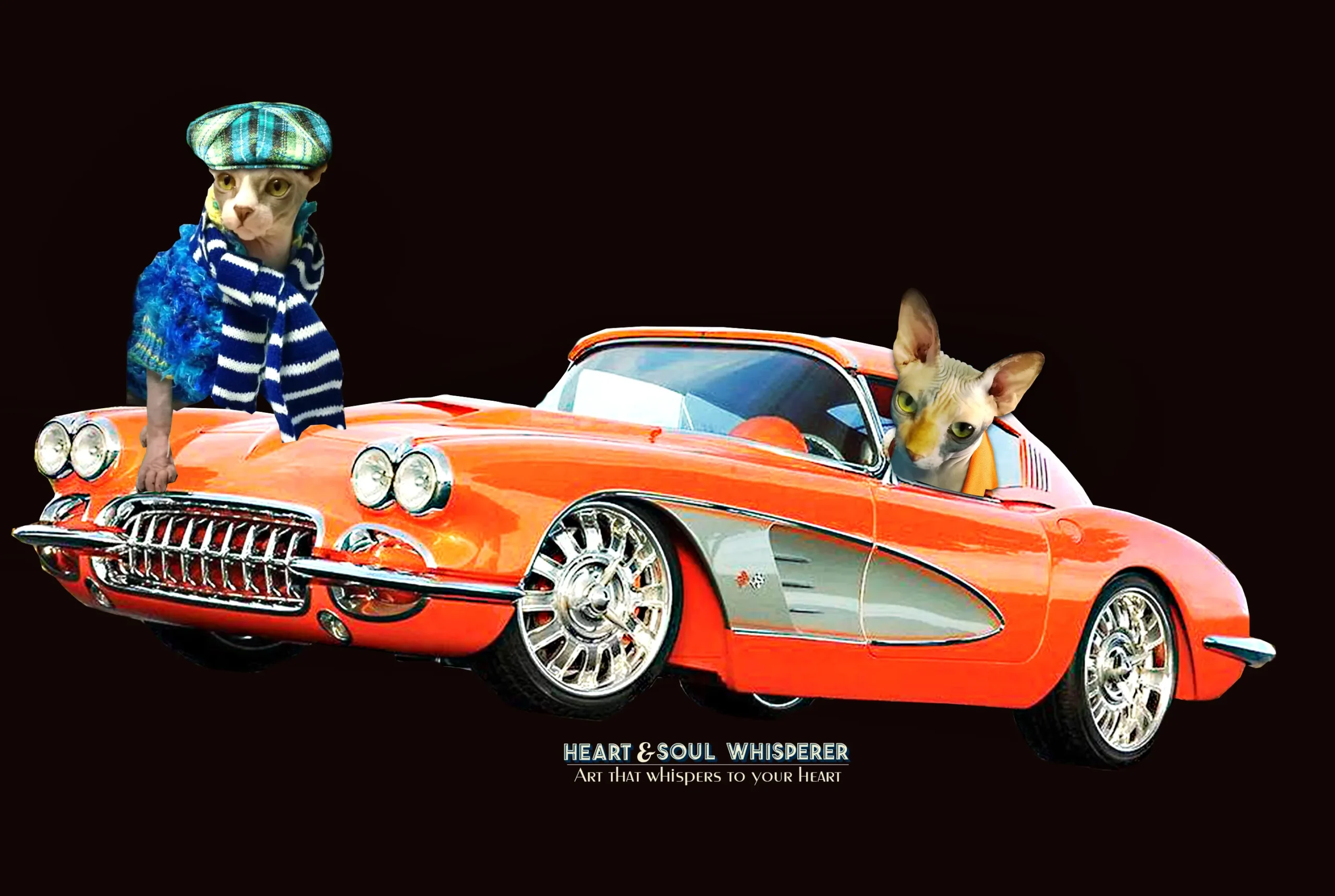
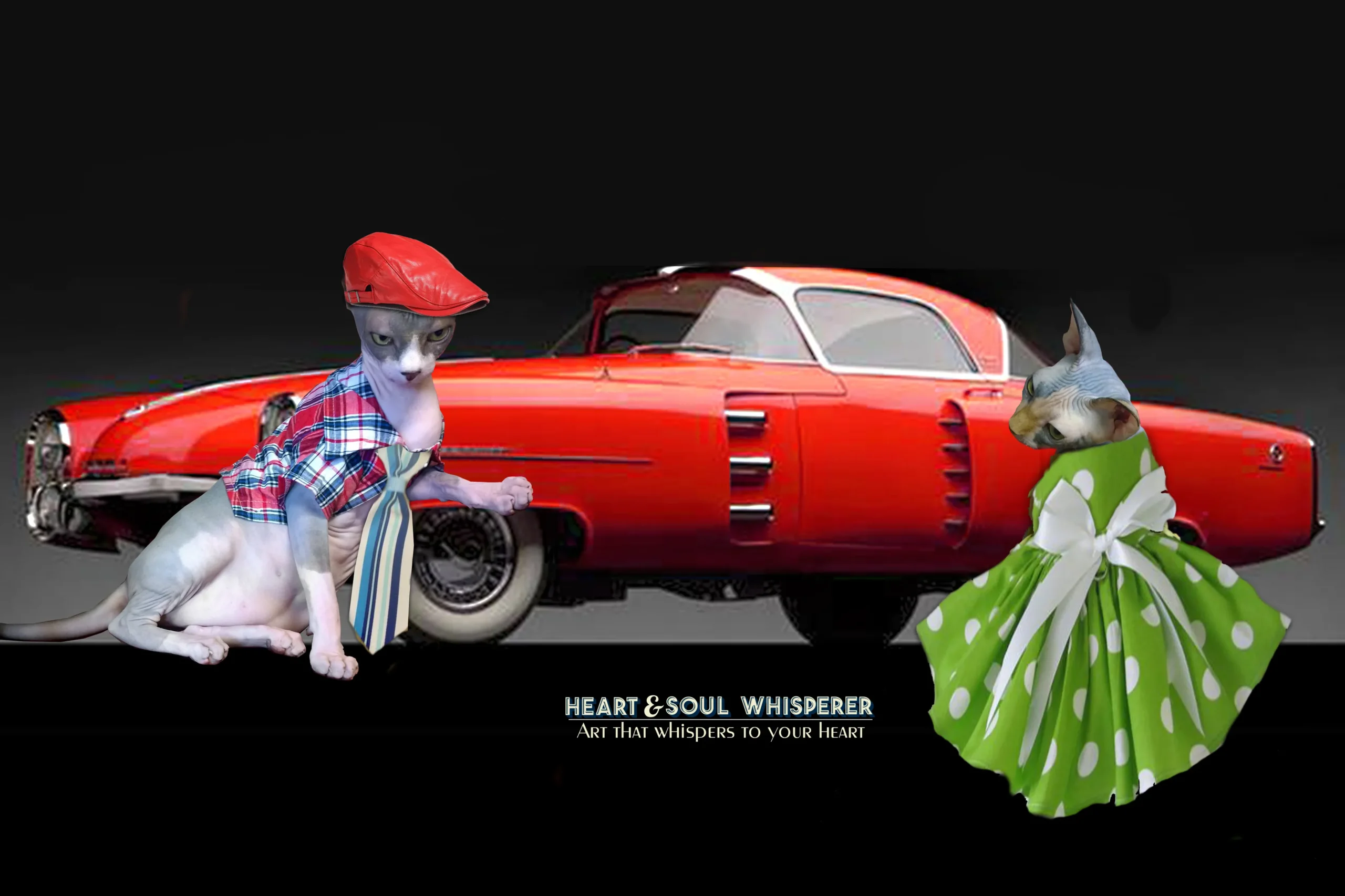
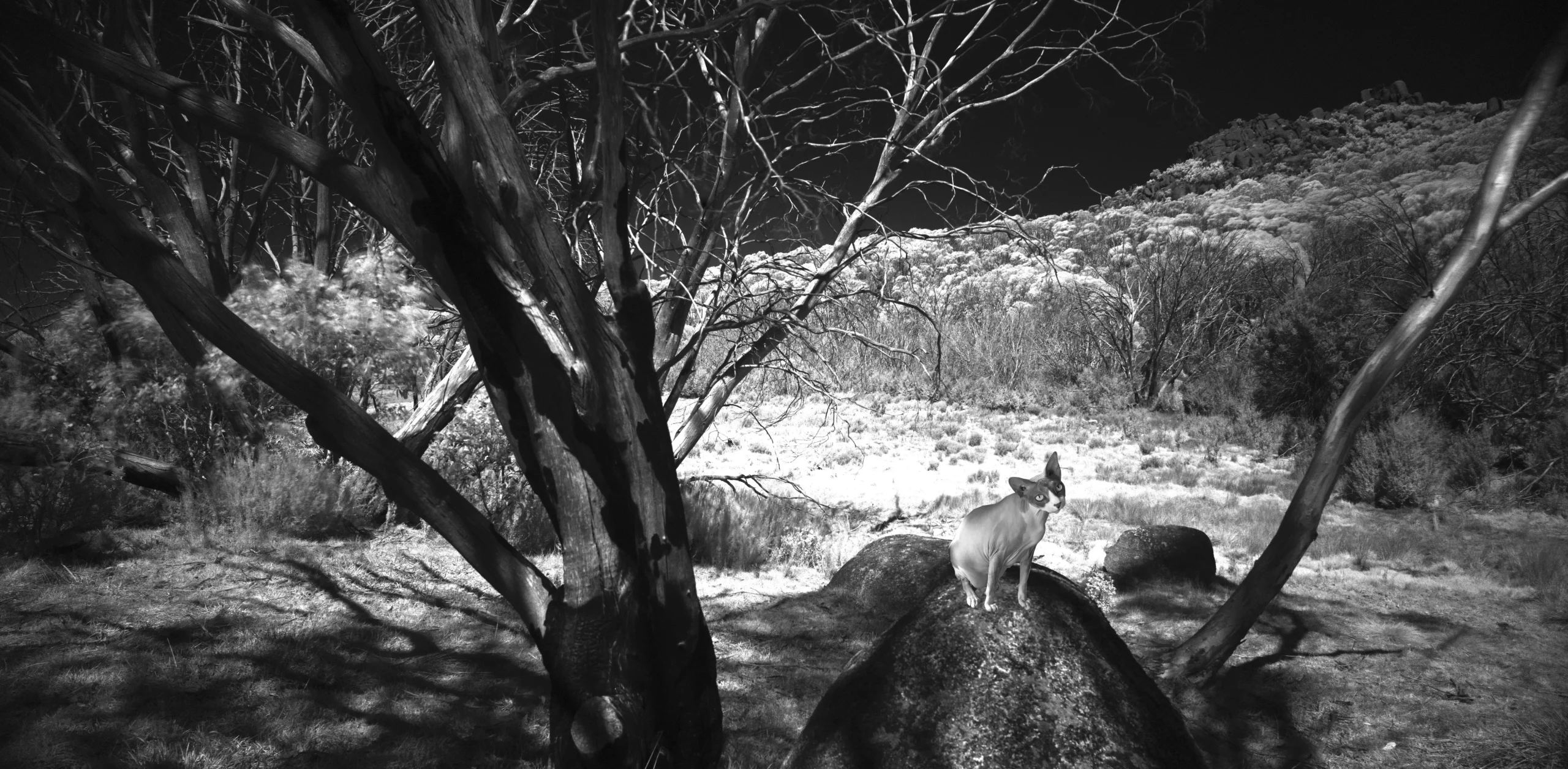
═══════════════════════════════════════════════════
At Heart & Soul Whisperer Art Gallery, every coloured and black and white photograph tells a story beyond sight—an emotional journey captured in light, shadow, and soul. Founded by visionary artist Dr Zenaidy Castro, our curated collections—spanning landscapes, waterscapes, abstract art, and more—offer a timeless elegance that transcends fleeting trends. Whether enriching private residences, corporate offices, healthcare facilities, hospitals, or hospitality spaces, our artworks are designed to transform environments into sanctuaries of memory, beauty, and enduring inspiration. Let your walls whisper stories that linger—reflections of art, spirit, and the love that connects us all.
[sp_easyaccordion id=”54056″]
═══════════════════════════════════════════════════
Tag: Travel destination, Travel stories, Travel Blog, Cultural travel, Travel Guide, Adventure Travel, Nature Travel, Street Photography, Wanderlust, Travel Photography, Adventure, World Traveler, Globetrotter, Travel Life, Explore The World


